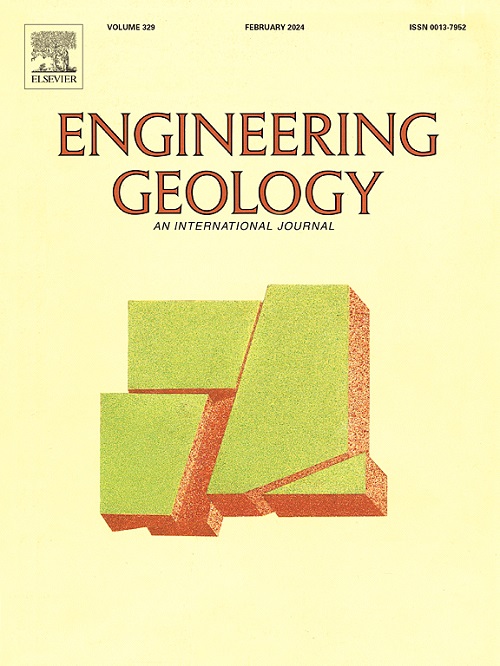Fungus-induced sand stabilization: Strength and erosion resistance properties
IF 8.4
1区 工程技术
Q1 ENGINEERING, GEOLOGICAL
引用次数: 0
Abstract
Climate change increases the frequency of extreme weather events, intensifying shallow flow-type landslides, soil erosion in mountainous regions, and slope failures in coastal areas. Vegetation and biopolymers are explored for ecological slope protection; however, these approaches often face limitations such as extended growth cycles and inconsistent reinforcement. This study investigates the potential of filamentous fungi and wheat bran for stabilizing loose sand. Triaxial shear tests, disintegration tests, and leachate analyses are conducted to evaluate the mechanical performance, durability, and environmental safety of fungus-treated sand. Results show that the mycelium enhances soil strength, reduces deformation, and lowers excess pore water pressure, with a more pronounced effect under undrained than drained conditions. Mycelium adheres to particle surfaces, forming a durable bond that increases cohesion and shifts the slope of the critical state line, significantly enhancing the mechanical stability of fungus-treated sand. The resulting strength parameters are comparable to those of soils reinforced with plant roots. Fungus-treated sand remains stable after 14 days of water immersion following triaxial shear tests, with no environmental risk from leachate. These findings demonstrated that fungal mycelium provides an effective and eco-friendly solution for stabilizing loose sand, mitigating shallow landslides, and reinforcing coastlines.
真菌引起的砂稳定:强度和抗侵蚀性能
气候变化增加了极端天气事件的频率,加剧了浅流型滑坡、山区土壤侵蚀和沿海地区的边坡破坏。探索植被和生物聚合物的生态护坡;然而,这些方法往往面临诸如生长周期延长和不一致的强化等限制。本研究探讨了丝状真菌和麦麸在稳定松散沙子方面的潜力。通过三轴剪切试验、崩解试验和渗滤液分析来评价真菌处理砂的力学性能、耐久性和环境安全性。结果表明:菌丝体具有增强土体强度、减小土体变形、降低土体超孔隙水压力的作用,且在不排水条件下比排水条件下效果更显著;菌丝体附着在颗粒表面,形成持久的结合,增加了凝聚力,改变了临界状态线的斜率,显著提高了真菌处理过的沙子的机械稳定性。所得强度参数与植物根加固土的强度参数相当。经过真菌处理的沙子在三轴剪切试验中浸泡14天后保持稳定,没有渗滤液的环境风险。这些发现表明,真菌菌丝体为稳定松散的沙子、减轻浅层滑坡和加固海岸线提供了一种有效而环保的解决方案。
本文章由计算机程序翻译,如有差异,请以英文原文为准。
求助全文
约1分钟内获得全文
求助全文
来源期刊

Engineering Geology
地学-地球科学综合
CiteScore
13.70
自引率
12.20%
发文量
327
审稿时长
5.6 months
期刊介绍:
Engineering Geology, an international interdisciplinary journal, serves as a bridge between earth sciences and engineering, focusing on geological and geotechnical engineering. It welcomes studies with relevance to engineering, environmental concerns, and safety, catering to engineering geologists with backgrounds in geology or civil/mining engineering. Topics include applied geomorphology, structural geology, geophysics, geochemistry, environmental geology, hydrogeology, land use planning, natural hazards, remote sensing, soil and rock mechanics, and applied geotechnical engineering. The journal provides a platform for research at the intersection of geology and engineering disciplines.
 求助内容:
求助内容: 应助结果提醒方式:
应助结果提醒方式:


